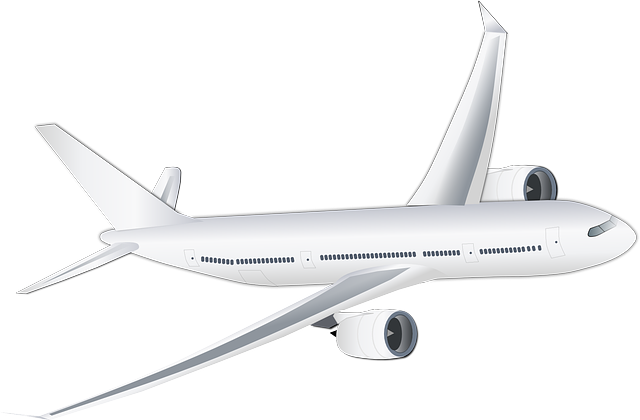
TORONTO – It’s a call for help that most physicians worry about when taking a flight: “Is there a doctor on board?”
What it heralds is an urgent medical issue, usually involving a passenger, which can range from someone experiencing severe pain or passing out to having a heart attack.
“Every health-care professional is likely to hear this call at some point while flying, but for most of us, treating patients on a plane is a completely unfamiliar scenario,” said Dr. Alun Ackery, an emergency physician at Toronto’s St. Michael’s Hospital, who co-authored recommendations aimed at helping medical professionals manage in-flight emergencies.
Trying to treat an ill passenger in the dimly lit and cramped confines of a commercial aircraft at 11,000 metres in the air can be a daunting proposition, said Ackery, especially if a doctor is unaware of what in-flight medical equipment is available.
“When you’re in a moment of crisis, you don’t really want to be learning about what you have to help you,” he said.
The recommendations, published Monday in the Canadian Medical Association Journal (CMAJ), were developed in collaboration with Air Canada and WestJet, which both carry comprehensive first aid kits on their aircraft.
“Each airline’s kit is going to look different, and the contents aren’t always going to be familiar, which adds another layer of complexity to an already stressful situation,” said Dr. David Kodama, an emergency medicine resident at the University of Toronto and a co-author of the recommendations.
The kits contain a number of medications, saline, a blood pressure cuff, stethoscope and other basic pieces of equipment to address on-board medical emergencies.
But the authors say the cabin environment also changes how some of that equipment is used and how certain diagnostic results are interpreted. For instance, a patient’s normal oxygen saturation is lower at altitude than on the ground and aircraft noise may make getting an accurate blood pressure reading using the cuff and stethoscope difficult.
“We want more physicians and health-care professionals to read this (CMAJ) article and gain some comfort in their ability to approach a medical problem on an aircraft,” said Ackery.
He and Kodama have also prepared a video discussing Air Canada’s on-board medical kit, and its URL is listed in the CMAJ article and will be posted on St. Michael’s Hospital’s website.
An estimated 2.75 billion passengers worldwide fly each year on commercial airlines, with about 133 million flyers in Canada in 2015, a 27 per cent increase over 2009, the article states.
The increasing number of passengers is one reason for a rising incidence of in-flight medical emergencies. Estimates range from one per every 604 flights to one per 7,700 passengers.
The top five causes of medical emergencies are lightheadedness/loss of consciousness, respiratory symptoms, nausea or vomiting, cardiac distress and seizures. Seven per cent of these emergencies result in the flight being diverted.
In Canada, Quebec is the only province that imposes a legal duty on physicians to come to the assistance of a person in a life-threatening emergency, the authors say.
So what is a doctor’s ethical and legal obligation to step forward when a call goes out for medical aid on a flight?
Dr. Jeff Blackmer, vice-president of professionalism at the Canadian Medical Association, said physicians are encouraged under the organization’s code of ethics to provide “whatever assistance they can to any person with an urgent need for medical care.”
“But there’s no law or regulation except in Quebec that requires a physician to do this,” he said from Ottawa.
There have a been some cases of Canadian doctors facing lawsuits after trying to help a sick passenger on their flight, but Blackmer said the Canadian Medical Protective Association that provides legal defence and liability protection to physicians does not provide blanket coverage in such cases.
Such protection is decided on a case-by-case basis and one of the issues doctors face is what country’s airspace is involved at the time.
“And it’s very different if you’re in Canada versus, say, over Russian airspace or Sub-Saharan African airspace or American airspace what your liability may or may not be,” he said.
“You have to make a judgment whether to participate and then sometimes make life and death decisions in a very less than optimal environment, with or without the necessary equipment.
“And you can’t sort of stop to say which airspace are we in?”
Blackmer, who flies a great deal in relation to his position with the CMA and has frequently responded to calls to help a fellow passenger in medical distress, said many doctors struggle with the issue of offering assistance.
For instance, if a physician is on board a flight and has had a couple of alcoholic drinks and perhaps been awakened in the middle of the night, he or she may feel their judgment might be impaired and they could do more harm than good, he said.
“So you can’t have a black-and-white statement that says doctors have an absolute ethical obligation to provide assistance during an in-flight emergency. It’s much more nuanced and complicated than that.”
The Canadian Medical Association Journal is editorially independent from the CMA, the professional